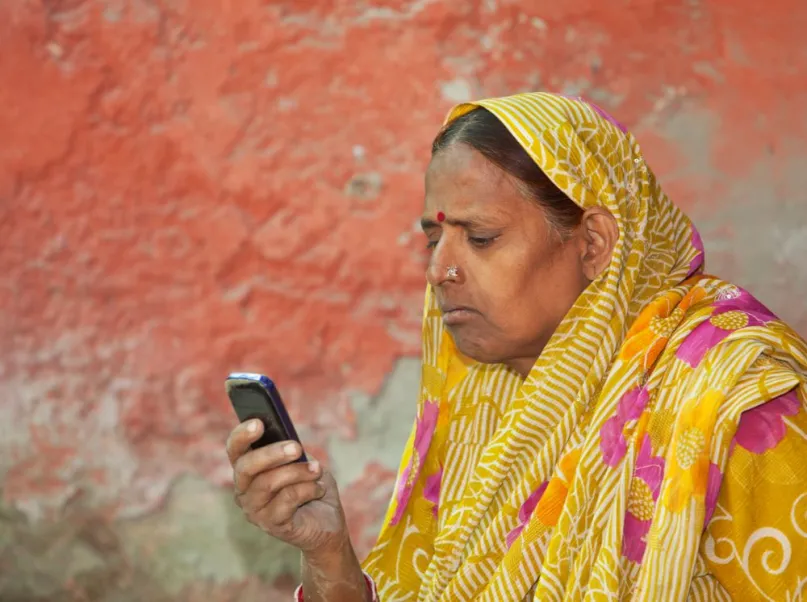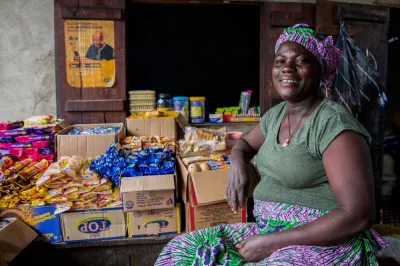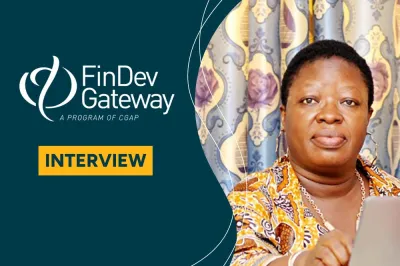India’s Digital Divide Threatens the Progress of Financial Inclusion

The Jan-Dhan-Aadhaar-Mobile trio, colloquially known as the JAM trinity, is the cornerstone of one of the most talked-about developments in the current discourse on digital transformation in India—the digital public infrastructure (DPI). The JAM trinity consists of three pillars: 1) the Jan Dhan scheme – a government initiative to expand financial inclusion through universal, affordable access to financial services, 2) Aadhaar – the world’s largest biometric ID system and 3) mobile phone technology which provides access to digital financial services. A monumental achievement in India's journey toward digitization, the JAM trinity has emerged as a noteworthy case study for developing nations seeking to revolutionize digital financial inclusion and social benefit delivery.

But the last pillar – mobile - is not as strong as the others

Amidst celebrating these achievements, the strength of one of the JAM trinity pillars – mobile communication – has been almost forgotten. In a country with a population of 1.4 billion, the unique mobile subscription figure stands at only 55%, with women and the rural populace constituting most of the left-out population.
This gap threatens India's progress in financial inclusion, particularly in extending access and improving usage and quality.
Challenges facing the mobile connectivity pillar
So, what are the key barriers to comprehensive digital inclusion? We explored the digital divide between smartphone and feature phone users and the limitations of basic phones and identified the following key challenges.
1. SMS delivery failures to feature phone users

Feature phones, prevalent among rural and low-income communities, often face SMS delivery failures due to limited storage space. Many feature phone users lack the digital literacy needed to clean their phone memory or reset their phones regularly, meaning that once their storage space is full, SMS messages remain undelivered. Additionally, subscribers complain about receiving unwanted calls and SMS messages, despite registering on the Do Not Disturb (DND) service, indicating poor adherence to regulations on unsolicited commercial communications. These spam messages exacerbate the problem by filling up mobile storage space even more quickly.
SMS delivery failures ultimately undermine the fundamental purpose of incorporating mobile as an integral pillar of digital communications, as they pose a significant challenge to e-KYC processes and delivery of government advisory and scheme benefit-related information.
2. High rates of SIM deactivation among low-income population

Increased telecom tariffs lead to frequent SIM deactivations among low-income users, preventing them from maintaining continuous connectivity. If a SIM card has not been used for 90 days (meaning no calls, outgoing SMS or data sessions and no payments), regulations state that it can be deactivated. Over the past few years, the cost of minimum recharge plans in India has risen significantly, primarily due to the bundling of internet services in regular recharge plans. This shift has moved the Indian mobile ecosystem from a "pay-as-you-go" model to a "subscription" model. Consequently, the minimum cost of keeping a mobile number active in India is now around $0.08 per day, amounting to approximately $28 per year.
The increased telecom tariffs, rising over 340% in the last three years, have significantly impacted the affordability of maintaining an active SIM for the low-income population. With the rollout of the new 5G services, the tariffs are expected to only go higher in the coming months.

3. Aadhaar seeding to a third-party mobile number
Aadhaar seeding is the process of linking an individual's Aadhaar ID number with their mobile SIM card for verification and identification purposes. With Aadhaar seeding mandatory for online services, a single mobile number is often linked to multiple Aadhaar IDs in India, where Aadhaar saturation is 95% but unique mobile subscriptions are only 55%. Individuals without mobile phones frequently register neighbors', relatives’ or Common Service Centre (CSC) operators' numbers, compromising the Aadhaar database's integrity and posing significant risks of data misuse and privacy breaches.
Moving towards a more inclusive digital infrastructure
To address these challenges and move towards a more inclusive and efficient digital infrastructure, proactive measures are essential. We recommend the following regulatory and policy measures to combat these challenges.
Regulatory measures
- Guidelines for creating affordable tariffs: Service providers should be directed to formulate tariff packs tailored for vulnerable populations. These packs should offer basic communication services at minimal costs and have longer validity periods. Avoid unnecessary bundling of added services with basic communication plans to minimize costs.
- Enhancing oversight on unsolicited communications: Vigilantly enforce regulations around unsolicited commercial communications. One effective approach is to promote the use of flash messages instead of SMS wherever feasible.
Policy measures
- Deepening digital literacy efforts: Policymakers should continue their efforts to enhance digital literacy and consumer awareness among rural populations. Create specific modules and campaigns targeting feature phone users to empower them with knowledge on managing mobile storage, understanding recharge plans and the significance of data protection.
- Innovative initiatives: Inspired by initiatives like Jan-Dhan, policymakers should focus on renewing the mobile ecosystem. One such intervention could be providing special status to mobile numbers linked to Jan Dhan accounts, ensuring these numbers remain active even in the absence of a validity pack. This would allow low-income users to continue receiving incoming calls and messages, ensuring they stay connected.
In conclusion, a multifaceted approach combining regulatory interventions, targeted tariff structures and educational initiatives is key to overcoming the challenges faced by the third pillar of the JAM trinity - mobile.


